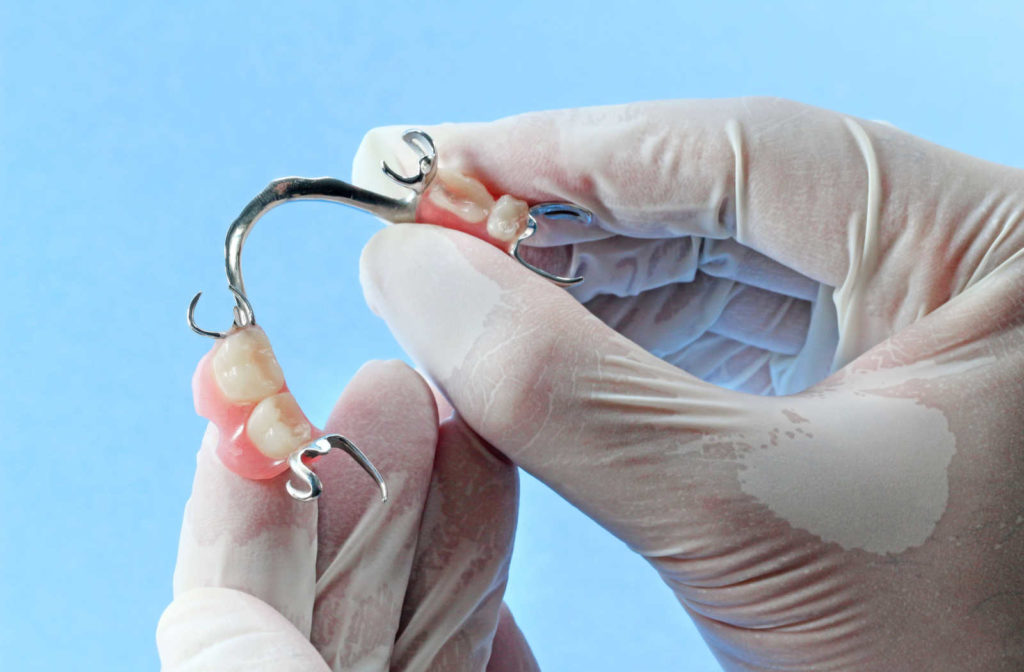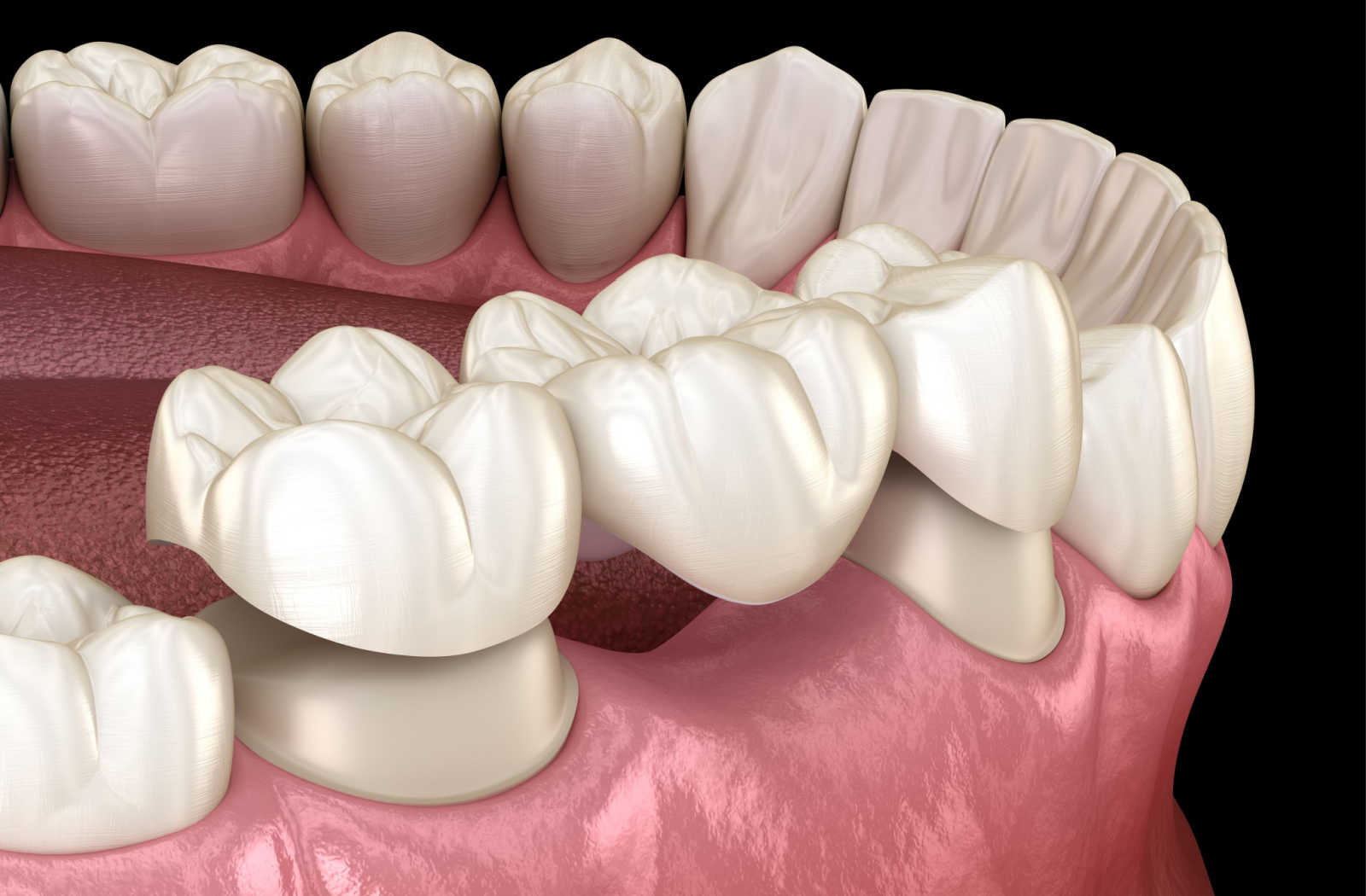What Is a Dental Bridge?
There are several solutions to replace a lost or extracted tooth. While dentures might be what many people think of when they consider false teeth, a dental bridge is another option to restore your smile.
Bridges are fixed—meaning they are intended to stay in place long-term. Yet natural teeth, crowns, and fillings can wear over time because of bacteria, injuries, or use. So how long can patients expect a dental bridge to last?
How a Bridge Works
A dental bridge is a custom-fitted artificial replacement for a lost tooth. Like a bridge crossing over a road or body of water, a dental bridge has 2 sides or attachment points. The middle of the bridge is an artificial tooth used to fill a gap or hole.
A bridge can be attached to:
- 2 natural teeth (using crowns)
- 2 dental implants (artificial root)
- One natural tooth & one dental implant
Types of Bridges
There are multiple bridge types, but the most common include traditional, resin-bonded, or cantilever bridges.
Traditional bridges have 2 attachment points—either natural teeth or implants—with a custom-made artificial tooth fused to 2 crowns.
Resin-bonded bridges or Maryland bridges are used to replace missing front teeth. Artificial teeth are fused with metal or porcelain and bonded to the back of natural teeth.
Cantilever bridges are used when the patient does not have healthy teeth or gums on both sides. A pontic is fitted into the gap to act as an anchor to improve stability. The artificial tooth is supported by one or more adjacent natural teeth and the pontic.
How Long Can a Bridge Last?
When cared for, a dental bridge can last 10 years or more. Like natural teeth, practicing good oral hygiene is crucial in maintaining your bridge. Daily brushing and flossing, visiting your dentist regularly, and eating a healthy diet are all part of oral care.
Flossing a dental bridge can be trickier than flossing a natural tooth. Your dentist can show you how to floss under and around the artificial tooth (or teeth) using a floss threader. Cleaning the space under the bridge is just as important as cleaning the outside.

Dental Bridge Alternatives
A dental bridge is a solution for one or more missing teeth, as it can restore function and appearance. Patients may also benefit from alternatives, including dentures or dental implants.
Dentures
Dentures are the most well-known solution for replacing several missing teeth. Unlike a fixed dental bridge, dentures are removable. There are multiple types of dentures, including traditional, partial, or snap-in dentures.
Traditional or complete dentures can replace an entire set of teeth, or just the top or bottom. Notably, conventional dentures may be less secure than fixed bridges, as dentures are primarily held in place because of suction. However, dentures can be used when a patient lacks healthy teeth to attach a bridge. When cared for, dentures can last 7–10 years.
Partial dentures can replace multiple missing teeth, but not an entire set. They are removed (usually at night) for cleaning. Partial dentures are secured by a combination of suction and clasps that fit on nearby teeth.
Generally, partial dentures are designed as a temporary option (until full dentures or another long-term option is implemented). However, partial dentures can last several years.
An overdenture or snap-in denture is secured with dental implants, improving stability and allowing the dentures to feel and look like natural teeth.
Dental Implants
Although a dental implant can support a dental bridge when more than one tooth is missing, patients may benefit from an implant crown to replace a single missing tooth, rather than a bridge. An implant can restore strength, improve appearance, and prevent bone and tissue deterioration when a tooth is missing. Patients may receive more than one implant to replace multiple missing teeth.
A dental bridge can improve function and appearance, but a bridge does not replace the missing tooth root. The bridge can prevent tooth shifting, as teeth support the 2 ends. However, an implant can also help prevent bone loss in the jaw.
Implants are intended to be permanent. But, sometimes, an implant may need to be replaced between 15–20 years.
A dental implant procedure is surgical and requires a recovery period. Patients also need enough jaw bone to support the implant. An implant can also help support a bridge or overdenture to replace multiple teeth.
Your dentist can help you determine if your oral health may benefit more from an implant or a bridge.
Is A Bridge Right for You?
A missing tooth can significantly impact your daily life, changing how you eat, speak, and look. At Ti Dental, we’re passionate about restorative services that help patients eat, laugh, and smile confidently.
A bridge is only one possible solution for replacing a missing tooth or teeth. After discussing your needs and assessing your oral health, we can recommend an appropriate solution. Request an appointment at Ti Dental today!








